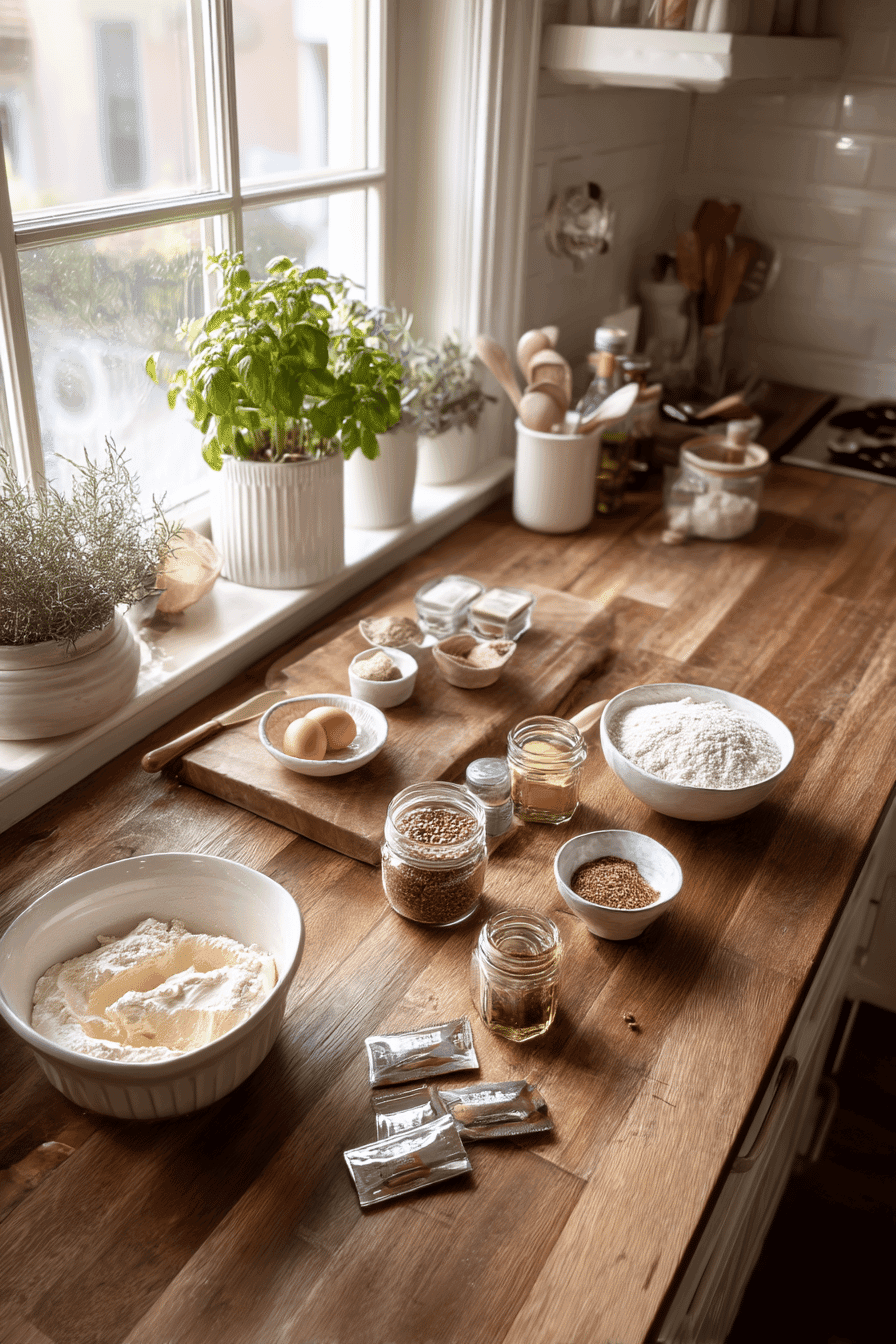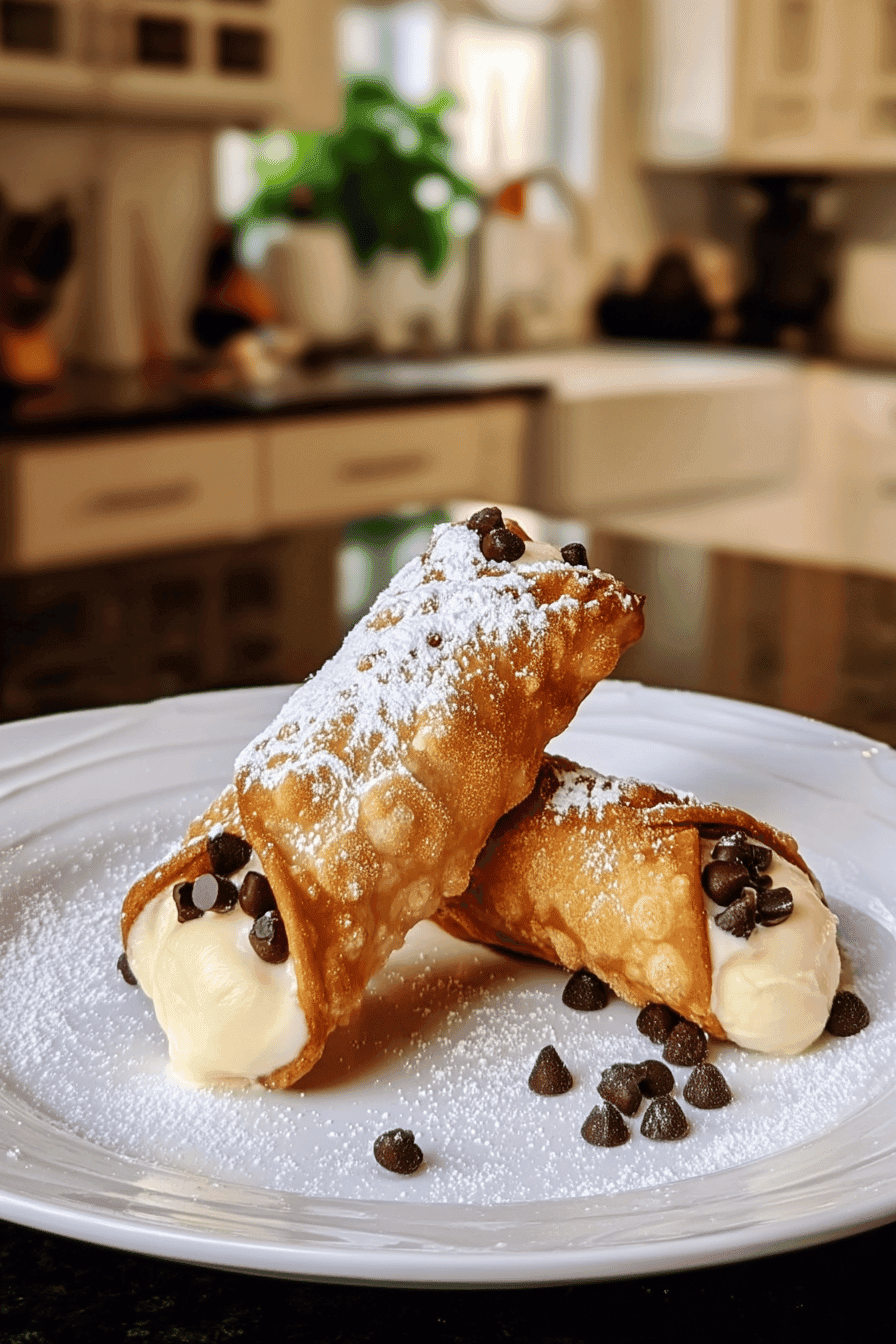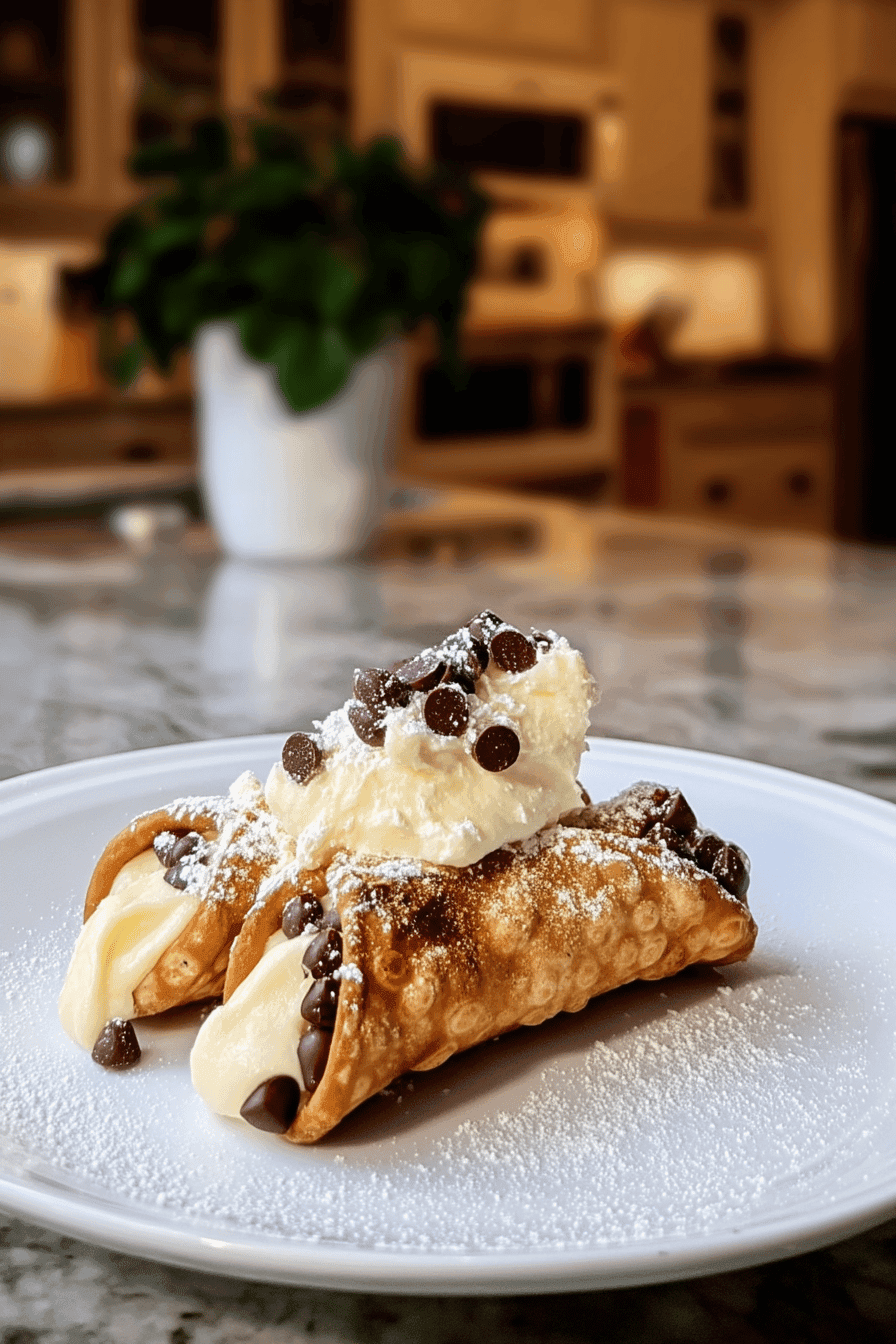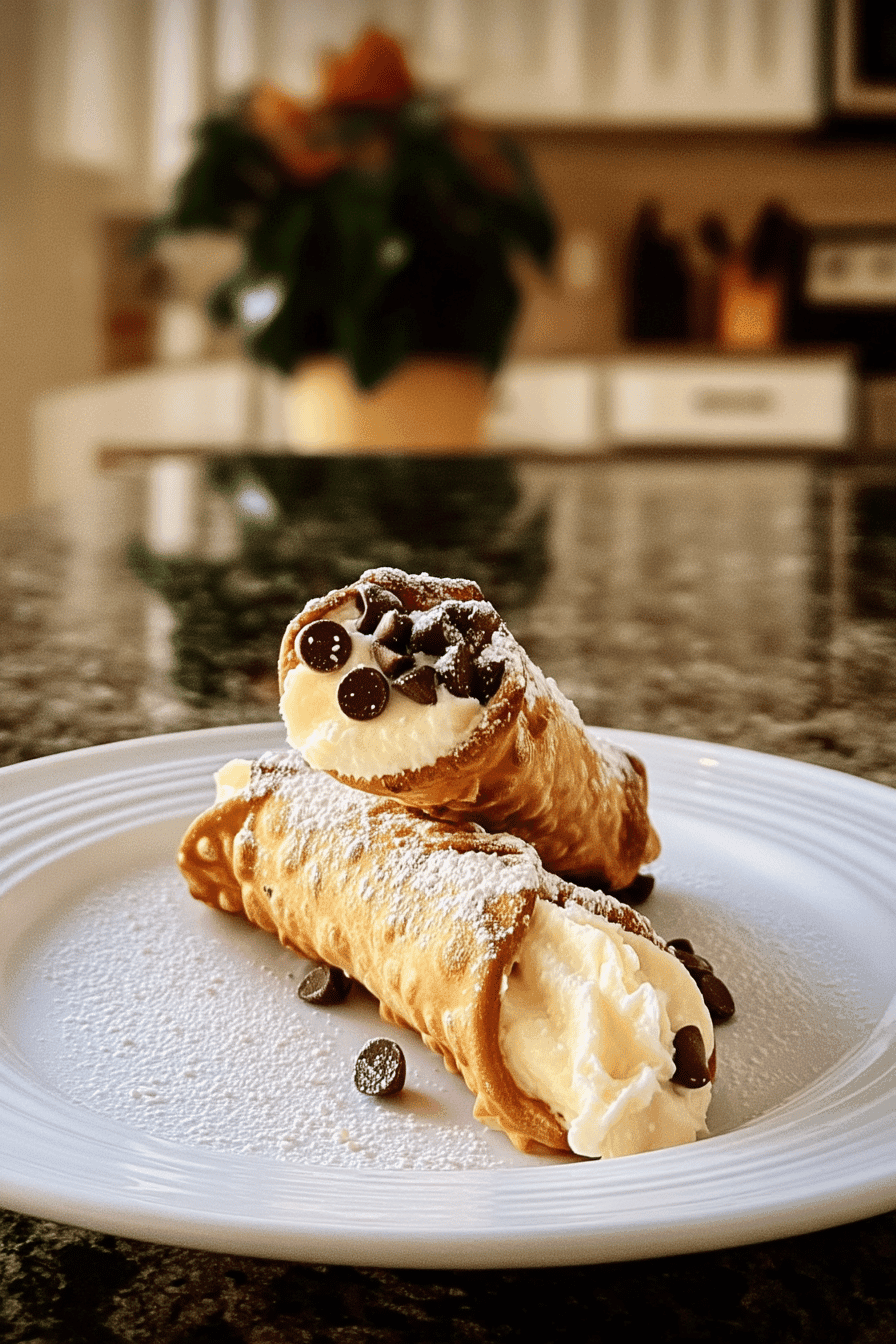Benefits and Advantages of Italian Cannoli
Italian cannoli offer a delightful blend of crispy shell and creamy filling, making them a favorite dessert worldwide. This recipe stands out because it is straightforward, allowing even beginners to create authentic Italian treats with ease. Using fresh ingredients enhances the flavor and adds nutritional value, offering a balanced indulgence. Moreover, the recipe’s versatility allows it to accommodate various dietary preferences, such as vegan ricotta or gluten-free shells, without compromising traditional taste. The use of natural sweeteners and ricotta cheese provides protein and calcium, promoting healthier dessert options compared to heavily processed sweets. Overall, this recipe combines simplicity, taste, and health benefits, ensuring Italian cannoli remain a timeless pastry in Italian cuisine enjoyed by many.
Jump To
- 1. Benefits and Advantages of Italian Cannoli
- 2. Essential Ingredients for Italian Cannoli
- 3. Dietary Substitutions to Customize Your Italian Cannoli
- 4. How to Prepare the Perfect Italian Cannoli: Step-by-Step Guide
- 5. Advanced Tips and Variations
- 6. How to Store Italian Cannoli: Best Practices
- 7. Nutritional Value of Italian Cannoli
- 8. FAQs: Frequently Asked Questions About Italian Cannoli
- 9. Classic Cannoli Recipe: How to Make Crispy Shells and Creamy Filling at Home
Essential Ingredients for Italian Cannoli
- 250 grams (2 cups) all-purpose flour (gluten-free blend available)
- 30 grams (2 tablespoons) granulated sugar
- 1/4 teaspoon salt
- 30 grams (2 tablespoons) unsalted butter, chilled and diced (or coconut oil for vegan option)
- 60 ml (1/4 cup) Marsala wine or white wine (alternative: grape juice mixed with 1 tablespoon white vinegar)
- 1 whole egg plus 1 egg white (for dough and sealing edges; flaxseed egg for vegan alternative)
- Vegetable oil or shortening for deep frying (about 1-2 liters)
- 450 grams (2 cups) whole milk ricotta cheese, well strained (or vegan ricotta alternative)
- 100 grams (1/2 cup) powdered sugar (can be substituted with granulated sugar or low-calorie sweeteners)
- 1 teaspoon vanilla extract
- 1/2 teaspoon ground cinnamon
- 50 grams (1/4 cup) mini chocolate chips (optional)
- Optional garnishes: chopped unsalted pistachios, candied citrus peel, extra chocolate chips
Dietary Substitutions to Customize Your Italian Cannoli
Customizing Italian cannoli to suit various dietary needs is straightforward:
- Gluten-Free Options: Replace traditional all-purpose flour with a gluten-free flour blend to maintain crispy, delicious shells.
- Vegan Alternatives: Use coconut oil or vegan butter instead of regular butter. Substitute the whole egg and egg white with flaxseed or chia seed eggs as binding agents. Replace the ricotta cheese filling with plant-based ricotta made from almonds, tofu, or cashews.
- Low-Calorie Variations: Opt for light ricotta or blend ricotta with Greek yogurt to reduce fat content. Replace powdered sugar with low-calorie sweeteners like stevia or erythritol to reduce sugar intake.
These substitutions preserve the delicious nature of Italian cannoli while accommodating dietary preferences and health goals.

How to Prepare the Perfect Italian Cannoli: Step-by-Step Guide
- Prepare the dough: In a food processor or bowl, combine flour, sugar, and salt. Pulse in chilled butter or coconut oil until mixture resembles coarse crumbs.
- Add liquids: Add whole egg (or flaxseed egg) and gradually pour in Marsala or white wine, mixing to form a smooth, stiff dough. Adjust flour or liquid as needed.
- Rest the dough: Wrap dough in plastic wrap and refrigerate for 30 minutes to 2 hours to relax gluten.
- Roll the dough: On a floured surface, roll dough very thin, about 1-2 mm thick.
- Cut and shape: Cut dough into circles approximately 9-10 cm (3½ to 4 inches) in diameter. Wrap each circle tightly around a greased metal cannoli tube and seal edges with egg white or vegan replacement.
- Fry shells: Heat oil to 175°C (345-355°F). Fry dough-wrapped tubes for 1-2 minutes until golden and crisp. Drain on paper towels and carefully remove shells once cooled.
- Prepare filling: Thoroughly strain ricotta using cheesecloth or fine mesh to remove moisture. Lightly fold ricotta with powdered sugar, vanilla extract, and cinnamon until smooth. Gently mix in mini chocolate chips if desired. Chill for at least 30 minutes.
- Assemble cannoli: Fill cooled shells with ricotta mixture using a piping bag or spoon just before serving. Garnish ends with chopped pistachios, chocolate chips, or candied citrus peel. Dust with powdered sugar for finishing touch.
For crisp shells and creamy filling, filling cannoli just before serving is essential to preserve the perfect texture contrast.
For more traditional Italian pastries, visit our Italian Cream Filled Cannoncini recipe.
Advanced Tips and Variations
Make your Italian cannoli even more delicious and unique with these advanced tips and variations:
- Enhance Texture: Add finely chopped unsalted pistachios or almonds to the ricotta filling or sprinkle them on the ends of the filled cannoli for a refreshing crunch.
- Flavor Boost: Incorporate subtle hints of orange or lemon zest into the filling to add a bright, citrusy note that balances the sweetness.
- Richness Upgrade: Combine mascarpone cheese or a vegan mascarpone alternative with ricotta for extra creamy and luxurious filling.
- Fried vs. Baked Shells: While traditional shells are fried for crispness, baked shells provide a lighter option with less oil, though they will be slightly less crunchy.
- Chocolate Dipped Ends: Dip cannoli ends into melted dark chocolate and allow to set for an elegant and decadent touch.
- Spice Variations: Experiment by folding cinnamon or cocoa powder into the filling for unique flavor twists.
- Serving Timing: Always fill the cannoli shells just before serving to preserve their crisp texture and prevent sogginess.
These adjustments maintain traditional flavors while offering creative twists that make your Italian cannoli stand out.
How to Store Italian Cannoli: Best Practices
Proper storage is crucial to enjoy Italian cannoli at their best, ensuring crisp shells and fresh creamy filling.
- Separate Storage: Keep cannoli shells and ricotta filling stored separately. Store the shells in an airtight container in a cool, dry place for up to two days.
- Filling Storage: Store the ricotta filling in an airtight container in the refrigerator for up to three days.
- Filling Timing: Fill the cannoli shells right before serving to maintain the crispness of the shell.
- Freezing Shells: Unfilled cannoli shells can be frozen for up to one month. Thaw at room temperature and re-crisp in a preheated 350°F (175°C) oven for a few minutes before filling.
- Reheating Soft Shells: If shells become soft, briefly warming them in the oven will restore crispness. Avoid reheating filled cannoli.
Following these storage practices ensures your Italian cannoli will deliver the perfect blend of crunchy shell and creamy filling every time.
Nutritional Value of Italian Cannoli
| Nutrient | Amount per Serving | Notes |
|---|---|---|
| Calories | 180-250 kcal | Varies with filling amount and shell thickness |
| Fat | 10-18 g | Includes saturated fats from butter and ricotta |
| Carbohydrates | 18-25 g | Primarily from the fried shell and sugar |
| Protein | 5 g | Provided mainly by ricotta cheese |
| Sugar | 10-15 g | From sugar in filling and chocolate chips if included |
Using vegan ricotta or baking shells lowers calorie and fat content. Replacing sugar with substitutes like stevia can help reduce sugar intake without impacting flavor.

FAQs: Frequently Asked Questions About Italian Cannoli
How do I make traditional Italian cannoli dough without a food processor?
Answer guidance: Explain step-by-step how to prepare the dough by hand, including mixing dry ingredients, cutting in butter or fat, incorporating egg and Marsala wine, and kneading. Mention tips to achieve the right dough texture and resting time before frying. Use clear, simple language suitable for both beginners and experienced cooks.
What’s the best way to strain ricotta for a smooth cannoli filling?
Answer guidance: Describe different methods to remove excess moisture from ricotta, such as using cheesecloth, paper towels, or refrigerator draining. Highlight why straining is important for texture and consistency in the filling. Include tips on selecting ricotta brands that are less watery.
How should I store cannoli shells and filling to keep them fresh?
Answer guidance: Provide detailed storage instructions for both uncooked and cooked shells, and separately for the filling, including recommended containers, temperatures, and shelf life. Explain why shells and filling should be stored separately to prevent sogginess and maintain crunchiness.
What can I do if my cannoli shells turn out too soft instead of crisp?
Answer guidance: Offer practical fixes such as reheating shells in the oven at a low temperature to restore crispness, and caution against reheating filled shells. Suggest preventive tips to avoid soft shells, like rolling dough thin and maintaining proper frying oil temperature.
What are common variations or substitutions in Italian cannoli recipes?
Answer guidance: List popular ingredient alternatives (e.g., different fats, sugars, flavorings in dough and filling), including how they affect taste and texture. Mention creative toppings and fillings like chocolate, pistachios, or mascarpone blends. This question supports natural inclusion of related keyword phrases and invites linking to recipe variations on your site.

Classic Cannoli Recipe: How to Make Crispy Shells and Creamy Filling at Home
- Total Time: 1 hour to 1 hour 45 minutes
- Yield: About 12 cannoli shells 1x
- Diet: Vegetarian
Description
🍰 Discover the joy of making classic Italian cannoli with crispy, golden shells and a luscious, creamy ricotta filling.
✨ This homemade recipe lets you enjoy an authentic Sicilian dessert that’s both crunchy and irresistibly smooth.
Ingredients
250 grams (2 cups) all-purpose flour
30 grams (2 tablespoons) granulated sugar
1/4 teaspoon salt
30 grams (2 tablespoons) unsalted butter, chilled and diced
60 ml (1/4 cup) Marsala wine or white wine (or grape juice mixed with 1 tablespoon white vinegar)
1 whole egg plus 1 egg white (for dough and sealing edges)
Vegetable oil or shortening for deep frying (about 1-2 liters)
450 grams (2 cups) whole milk ricotta cheese, well strained
100 grams (1/2 cup) powdered sugar (or granulated sugar)
1 teaspoon vanilla extract
1/2 teaspoon ground cinnamon
50 grams (1/4 cup) mini chocolate chips
Optional garnishes: chopped unsalted pistachios, candied citrus peel, extra chocolate chips
Instructions
1. In a food processor or bowl, combine flour, sugar, and salt. Pulse in cold butter until mixture resembles coarse crumbs.
2. Add Marsala wine and whole egg, mix until soft, smooth dough forms. Add water or flour if needed. Cover and rest dough for 30 minutes to 2 hours.
3. Roll dough very thin (1-2 mm) on floured surface. Cut into 9-10 cm circles.
4. Wrap each circle tightly around a greased metal cannoli tube, seal edges with egg white.
5. Heat oil to 175°C (345-355°F). Fry wrapped tubes 1-2 minutes until golden and crisp.
6. Drain on paper towels. Remove shells from tubes once cooled.
7. Strain ricotta well. Fold ricotta, powdered sugar, vanilla, cinnamon until smooth, then mix in chocolate chips. Chill at least 30 minutes.
8. Fill shells with ricotta mixture using piping bag or spoon just before serving.
9. Garnish ends with pistachios, extra chips, or candied peel. Dust with powdered sugar.
Notes
🌡️ Roll dough thin and fry at right temperature for crisp, non-greasy shells.
⏳ Fill shells just before serving to keep them crunchy; re-crisp in 120°C oven if needed.
❄️ Chill ricotta filling ahead to prevent watery texture and keep it creamy.
- Prep Time: 30 minutes
- Chilling and resting time: 30-75 minutes
- Cook Time: 15-20 minutes
- Category: Dessert
- Method: Frying and filling
- Cuisine: Italian
Nutrition
- Serving Size: 1 cannoli
- Calories: 180-250 kcal
- Sugar: 10-15 g
- Fat: 10-18 g
- Carbohydrates: 18-25 g
- Protein: 5 g
Keywords: classic cannoli, crispy shells, creamy filling, Italian dessert


